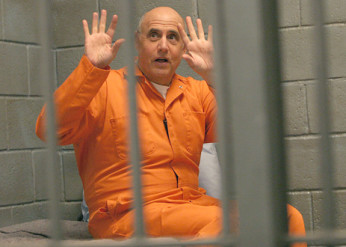By: Corinne Moini,
Have you ever posted a bad review of a product or company? Most people do this without a second thought—they feel cheated and want the world to know about it. They have a false sense of security that comes with an online post because many of these posts are submitted anonymously.[1] Whether you tell the truth or tell a lie, anonymously or not, companies are looking for these damaging reviews and those angry words you wrote can come back to haunt you in the form of a lawsuit.
You must be thinking to yourself—how is this possible? How can a company sue me for speaking my mind and exercising my constitutional right of freedom of speech? Many unhappy customers like Jennifer Ujimori felt the exact same way when she was served with a lawsuit for the online reviews she posted on Yelp and Angie’s List.[2]
Like the dog training company in Ujimori’s lawsuit, companies are able to sue customers for these reviews by sneaking non-disparagement clauses deep into the fine print of sales contracts. These clauses prohibit a consumer from posting or commenting about their purchase on social media sites.[3] For the most part, a non-disparagement clause is unenforceable:[4] partially because they allow businesses to intimidate customers into silence,[5] and partially because they contradict the basics of contract law by being one-side and lacking consideration.[6]
Ujimori is not the only person who believes non-disparagement clauses stifle a person’s ability to freely express themselves. In 2014, the state of California adopted a ban on non-disparagement clauses and threatened violators with a monetary fine.[7] Stressing the importance of protecting First Amendment rights, two California representatives introduced the Consumer Review Freedom Act, which makes non-disparagement clauses in companies’ sale contracts illegal.[8] The act does not hinder a business’s ability to sue consumers for deceitful reviews but only prevents them from bullying truthful consumers into silence.[9]
If the Consumer Review Freedom Act is enacted consumers will be free to post honest, negative online reviews. However, if the act fails to pass, then be wary—and keep your angry reviews as a draft on your computer.
Photo Source: http://t3.gstatic.com/images?q=tbn:ANd9GcQuS26ejH_sz1Jf6Q291tK0CmmMGNNkICEUTVjunT18KZLo0Rzl
Photo Source: http://www.talkissheepmarketing.com/wp-content/uploads/2014/01/winery-online-review.jpg
[1] See Mathew S. Adams, Business Owners Beware: Avoid the Temptation to Post Fake Reviews or Feedback Regarding Your Competition on Social Media or Elsewhere on the Internet, Above the Law (Feb. 12, 2015),
http://abovethelaw.com/2015/02/business-owners-beware-avoid-the-temptation-to-post-fake-reviews-or-feedback-regarding-your-competition-on-social-media-or-elsewhere-on-the-internet/.
[2] Jennifer Ujimori was unhappy with the dog obedience class she paid for and posted negative reviews on Yelp and Angie’s List to alert other consumers. She wrote, “in a nutshell, the services delivered were not as advertised and the owner refused a refund.” The dog obedience company did not offer her a refund but instead served her with a defamation lawsuit for $65,000 claiming statements were false and destroyed her business reputation. See Justin Jouvenal, Negative Yelp, Angie’s List reviews prompt dog obedience business to sue, Wash. Post (Mar. 25, 2015), https://www.washingtonpost.com/local/crime/negative-yelp-review-of-dog-obedience-class-spurs-lawsuit/2015/03/25/eb92dab6-d183-11e4-8fce-3941fc548f1c_story.html.
[3] See Id.
[4] See Jim Hood, Non-disparagement clauses: a new way to get nothing for something, Consumer Affairs (June 24, 2014), http://www.consumeraffairs.com/news/non-disparagement-clauses-a-new-way-to-get-nothing-for-something-062414.html.
[5] See Id.
[6] Hood, supra note 4, at 1.
[7] See Tim Cushing, Legislators Introduce Bill Calling For Nationwide Ban On Non-Disparagement Clauses, Tech Dirt (May 8, 2015), https://www.techdirt.com/articles/20150502/16355830865/legislators-introduce-bill-calling-nationwide-ban-non-disparagement-clauses.shtml.
[8] See Herb Weisbaum, Can a company stop you from writing a negative online review? Not if Congress passes this bill, Today Money (Sept. 24, 2014), http://www.today.com/money/congress-wants-you-be-able-criticize-companies-2D80168557.
[9] See Id.











